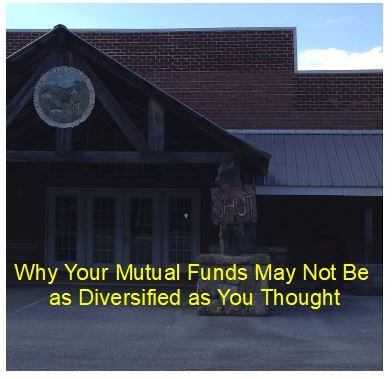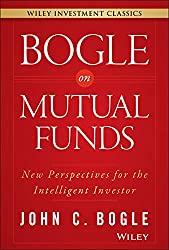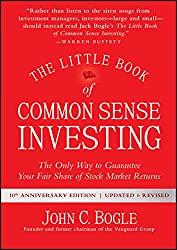
A big reason for investing in mutual funds instead of buying individual stocks is to achieve diversification. First of all, you want to have your money spread out enough so that if something bad happens at one of the companies you own like a big lawsuit or a bad decision, you won’t lose a large portion of your portfolio when the share price implodes. This is important since single stocks don’t always come back from bad events. Secondly, you want to always be invested in whatever is going up at the moment, rather than having your investments sit there while another segment of the market shoots for the moon. If you buy a little of everything, you’ll always own what is doing well right now. Since typically a few segments of the market will be going up at any given time, where the others will be treading water or declining slightly, you’ll almost always be gaining a little ground if you are spread out to cover the field. For example, if you own hotels, restaurant, banks, and defense contractors, the banks may be going up while the others are stagnant. If you just owned one of the four, you’d have a 75% chance of seeing your portfolio stagnate. If you own all four, you’ll almost always see some action somewhere.
(Note, this site contains affiliate links. As an Amazon Associate I earn from qualifying purchases. When you click on an affiliate link and buy something, The Small Investor will get a small commission for the referral. You are charged nothing extra for the purchase. This helps keep The Small Investor going and free. I don’t recommend any products I do not fully support. If you would like to help but don’t see anything you need, feel free to visit Amazon through this link and buy whatever you wish. The Small Investor will get a small commission when you do, again at no cost to you.)
Check out these great books by the father of the index fund, Jack Bogle:


It is very common for investors to buy index funds to try to cover the market. This is because index funds are cheaper than managed funds since they just buy a predefined basket of stocks, rather than paying a team of managers to make investment choices. History has also shown that index funds, because of their lower fees, will beat out actively managed funds much of the time. It, therefore, makes sense to put your money into index funds.
The issue is that buying into certain combinations of index funds may not leave you as diversified as you thought. This is because many indexes are allocated according to market cap (the price of a company’s shares times the number of shares out there). This means that larger companies in the index will make up a bigger portion of your portfolio than the smaller companies. If you buy two index funds that both contain some of the same, large companies in their holdings, you may end up owning a lot of the same companies.
To look at an example, let’s say that you put $10,000 into an S&P 500 fund and $10,000 into a NASDAQ fund. Let’s choose the Standard and Poors Depository Receipts (SPDRs – pronounced “spiders”) and the NASDAQ Q’s, (QQQ). (Note, these are actually Exchange Traded Funds, or ETFs, rather than index funds, but the same would hold true if you bought corresponding index funds.) The S&P 500 is 500 large US companies, where the NASDAQ Q’s invest in large companies in the NASDAQ exchange, which tends to focus on technology companies. Looking at the top 10 stocks in the SPDRs:
Microsoft CorpMSFT3.70%
Apple IncAAPL3.34%
Amazon.com IncAMZN2.88%
Berkshire Hathaway Inc BBRK.B1.67%
Facebook Inc AFB1.66%
Johnson & JohnsonJNJ1.57%
JPMorgan Chase & CoJPM1.48%
Alphabet Inc Class CGOOG1.47%
Alphabet Inc AGOOGL1.44%
Exxon Mobil CorpXOM1.43%
*Source: Yahoo Finance
These ten stocks make up 21% of the SPDR ETF, with almost 4% devoted to a large software company, Microsoft and almost as much invested in Apple.

Join Prime Video Channels Free Trial
Let’s now look at the Q’s, which invest in the major NASDAQ companies:
Microsoft CorpMSFT9.96%
Apple IncAAPL9.52%
Amazon.com IncAMZN9.29%
Alphabet Inc Class CGOOG4.57%
Facebook Inc AFB4.53%
Alphabet Inc AGOOGL4.01%
Intel CorpINTC3.11%
Cisco Systems IncCSCO2.99%
Comcast Corp Class ACMCSA2.26%
PepsiCo IncPEP2.12%
Again you see the same names at the top of the list, only now Microsoft, Apple, and Amazon represent about 10% of the ETF each. This means that what you thought was a diversified investment actually has about 37% invested in just three companies! And all of these companies are in the same sector of the market, technology, meaning that if the tech sector does poorly, you’ll do poorly.

(If you enjoy The Small Investor and want to support the cause, or you just want to learn how to become financially independent, please consider picking up a copy of my new book, FIREd by Fifty: How to Create the Cash Flow You Need to Retire Early This is the instruction manual on how to become financially independent.)
How can you get better diversification?
The issue with buying into both the S&P 500 and the NASDAQ market is that you’re buying a large-cap index, the S&P 500, plus a large-cap index devoted to technology, the Q’s. Add these two together and you get a lot of large-cap technology companies. Instead, just pick one Large-Cap fund that covers the whole market segment, then buy other funds that cover other segments of the market. For example, you could buy an S&P 500 fund such as the SPDRs, plus the SLYV, which is a small-cap SPDR with 600 small companies. SLYV has the following in its list of top 10 investments:
Darling Ingredients IncDAR0.96%
Moog Inc AMOG.A0.81%
Finisar CorpFNSR0.77%
SkyWest IncSKYW0.75%
Columbia Banking System IncCOLB0.74%
First Financial BancorpFFBC0.72%
South Jersey Industries IncSJI0.71%
H.B. Fuller CoFUL0.68%
II-VI IncIIVI0.68%
Simmons First National Corp Class ASFNC0.66%
Note that none of these stocks appears in the list for the SPDRs. You probably have not heard of any of these either, while you are probably familiar with all of the top holdings in the SPDRs. These are small companies that would not be well-known, yet.
Another thing to notice is that the top 10% of holdings only makes up about 7% of the ETF. Compare this with the SPDRs where the top ten holdings comprise over 20% of the ETF. The biggest small stocks aren’t as dominant and the biggest large stocks.

A sample diversified fund portfolio
So, what would a decently diversified portfolio look like? It would probably be something like this, using Vanguard index funds:
- Vanguard 500 Index Fund Admiral Shares (VFIAX): 20%
- Vanguard Small-Cap Index Fund Admiral Shares (VSMAX): 15%
- Vanguard Mid-Cap Index Fund Admiral Shares (VIMAX): 15%
- Vanguard International Growth Fund Investor Shares (VWIGX): 25%
- Vanguard Intermediate-Term Investment-Grade Fund Investor Shares (VFICX): 10%
- Vanguard Real Estate Index Fund Admiral Shares (VGSLX): 15%
Notice that we have about 20% in large US stocks, 30% in medium and small US stocks, 25% in large world growth stocks, 10% in bonds, and 15% in real estate. This covers all of the bases, includes both US and foreign stocks, and includes different types of investments that will not always go in the same direction. Each fund chosen invests in an entirely separate area of the market from the other funds. This portfolio might be suitable for someone in his/her twenties, thirties, or forties since it is tilted towards long-term growth and has relatively few bonds and fixed-income investments. It is also tilted towards small and mid-sized companies since these will do better than large stocks over long periods of time.

Get free shipping on many items you buy from Amazon through Amazon Prime. Try Amazon Prime 30-Day Free Trial
Learning more
This is just a brief primer on investing. To learn a lot more, check out my books, SmallIvy Book of Investing: Book 1: Investing to Become Wealthy and FIREd by Fifty: How to Create the Cash Flow You Need to Retire Early. The SmallIvy Book of Investing provides information on how to determine risk when investing, then goes on to provide strategies for investing with both individual stocks and mutual funds. FIREd by Fifty provides a great deal of information on investing with mutual funds, including mutual fund portfolios you can use to generate income when you’re retired or need cash from your portfolio for some other reason.

Want all the details on using Investing to grow financially Independent? Try The SmallIvy Book of Investing
Got a question? Please contact me via [email protected] or leave a comment.
Disclaimer: This blog is not meant to give financial planning or tax advice. It gives general information on investment strategy, picking stocks, and generally managing money to build wealth. It is not a solicitation to buy or sell stocks or any security. Financial planning advice should be sought from a certified financial planner, which the author is not. Tax advice should be sought from a CPA. All investments involve risk and the reader as urged to consider risks carefully and seek the advice of experts if needed before investing.
